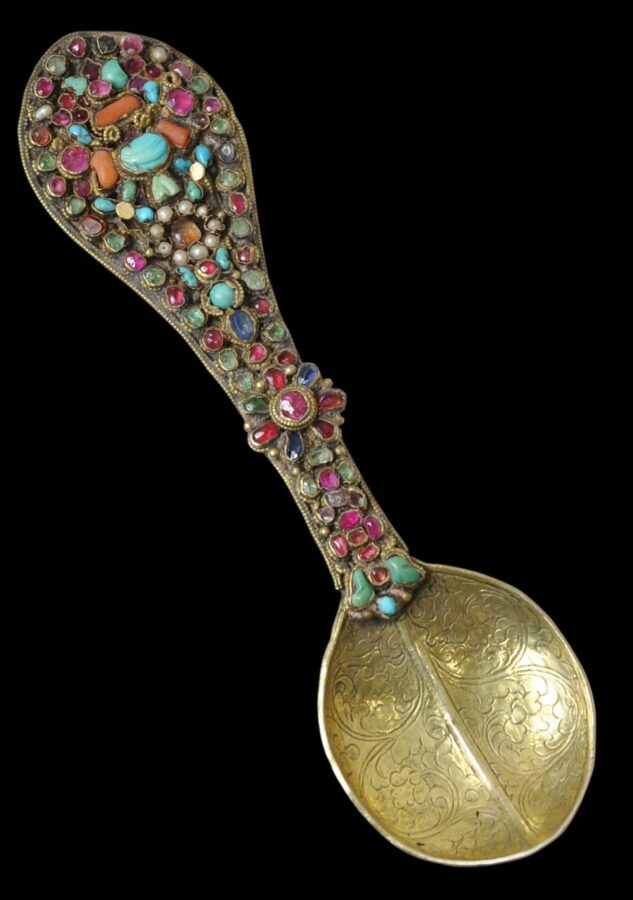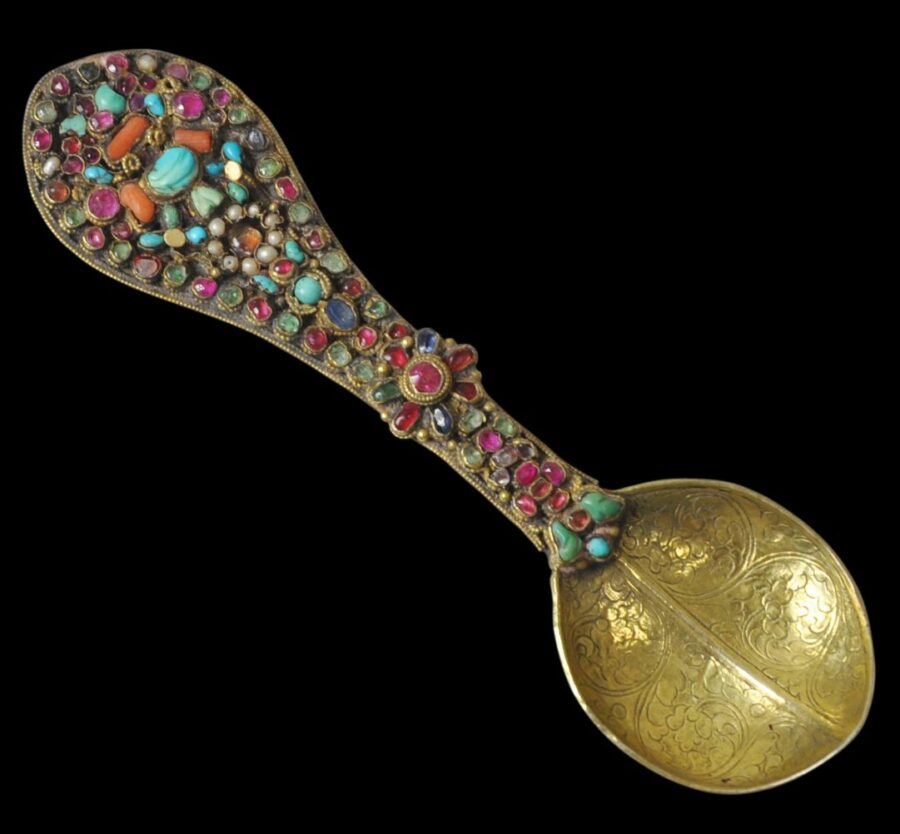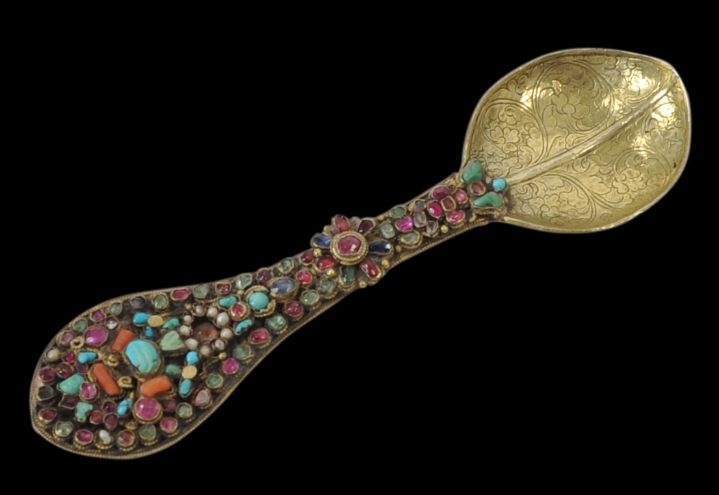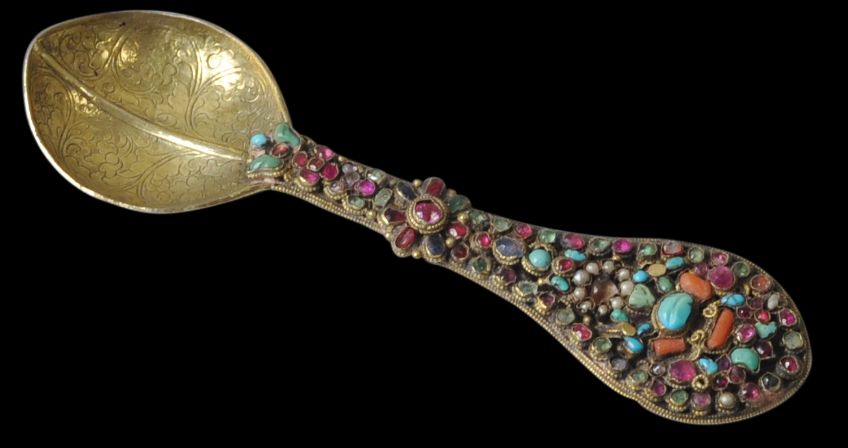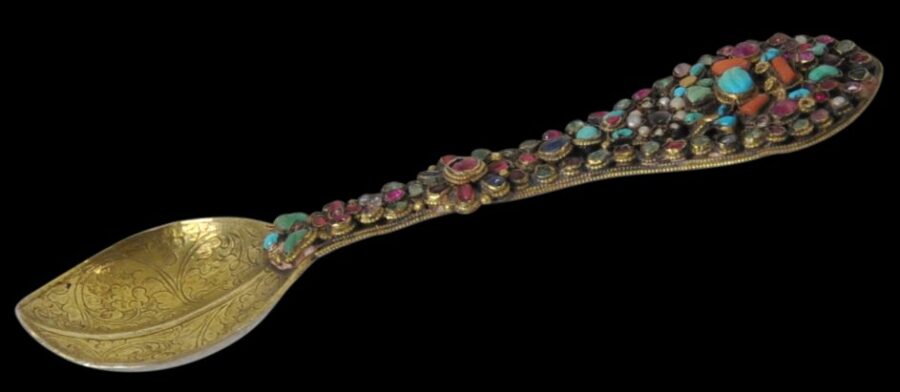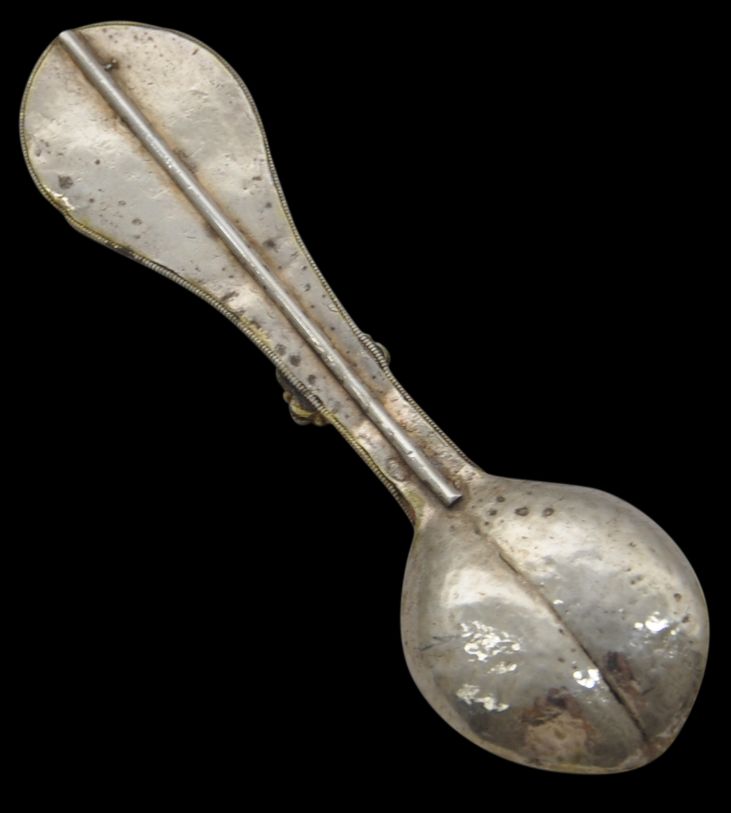This superb spoon is of almost pure silver that has been gilded (gold-plated) on the front and left un-gilded on the reverse. The handle and stem are set with dozens of semi-precious stones in box settings. The stones include coral, pearls, turquoise and what appear to be rubies, emeralds and sapphires, some of which are faceted. The gems are set in such a way as to suggest a vase of longevity (kalasha) on the handle, and with a flower motif closer to the bowl.
The oval-shaped bowl is of hand-beaten silver and has been engraved finely with Himalayan floral scrolling.
The reverse is largely unadorned with a silver rod running the length of the handle – but it has its own beauty on account of the hand burnishing and the obvious high purity of the silver.
The spoon is modelled on a Tibetan silver medicine – such spoons were used for mixing and administering healing powders and syrups. Such spoons were used for centuries in Tibet – silver was believed to have antiseptic properties.
This is the most luxuriously-set medicine spoon that we have seen. The work is of Newar origin (the Newar people are the majority group in the Kathmandu Valley and historically have dominated the metalworking and smithing trades. Most probably it was commissioned by a member of the extended Rana family, Nepal’s ruling family which provided Nepal’s prime ministers, a role that became hereditary and more powerful than the position of Nepal’s king.
The spoon is both rare and in excellent condition.
References
Beer, R., The Encyclopedia of Tibetan Symbols and Motifs, Serindia, 2004.


